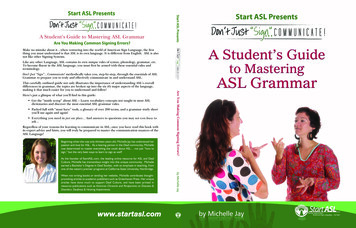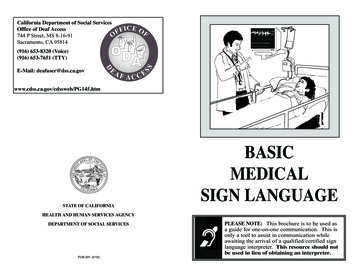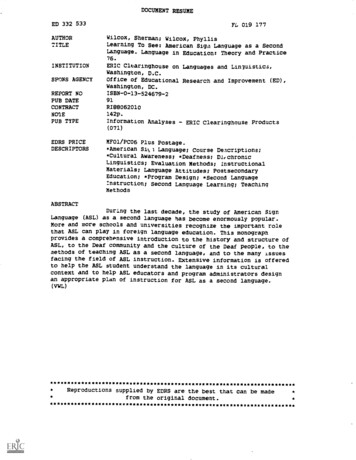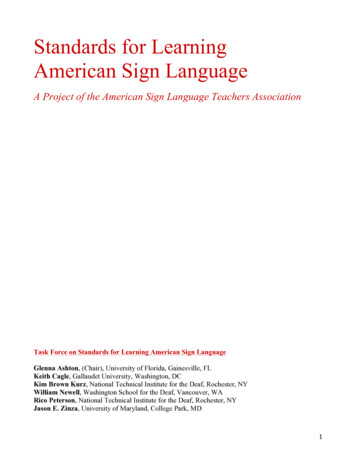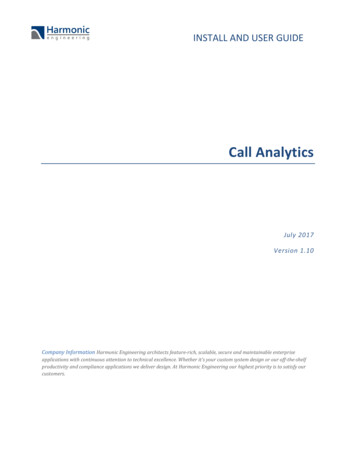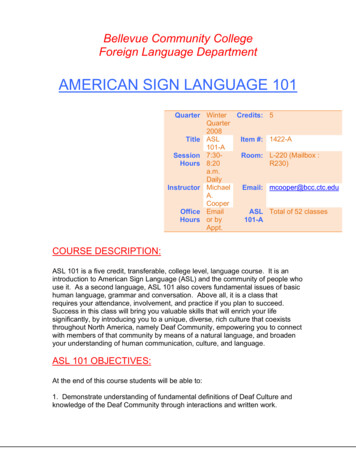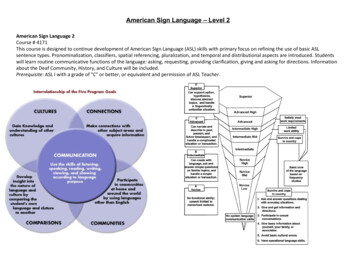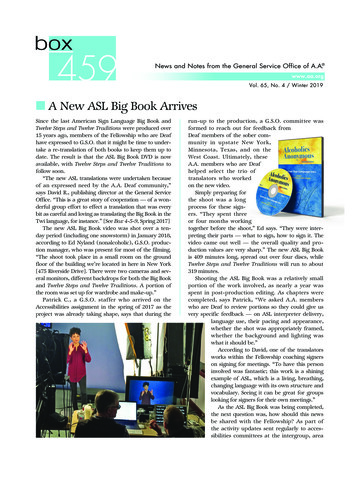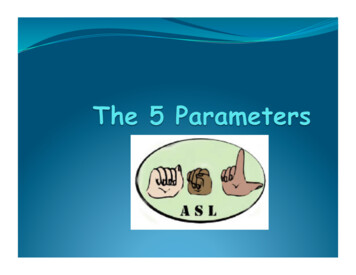
Transcription
The Five Parameters of ASL! Each ASL Sign can be broken down and analyzedinto five separate features called PARAMETERS.! For a single sign to be correct, each of the fiveparameters must be used correctly.! The following slides will explain these parameterswith examples to help you understand theconcept.
Handshape! This refers to the hand configuration which is used in beginning any!!!!word production in American Sign Language (ASL).If you're familiar with ASL Alphabet, you'll notice that every wordbegins with one of at least forty handshapes found in the manualalphabet.The handshape difference between me and mine is simple to identify,yet, ASL students often confuse the two.Common handshape errors include the differences between the number1 and D, D and F, & E and OHere are just a three examples of handshapes:! the 'c' as in class! the open 'a' as in behind! the bent 'v' as in squirrel.! Signs in the same location but different handshape:! Restaurant! Arizona! Twin
HandshapeExample
Palm Orientation! This refers to the direction in which the hand is turned toproduce a sign.! Palm orientation is the direction of your palm which mayinclude!!!!!!palm uppalm downpalm rightpalm leftpalm outward (away from you)palm inward (palm facing you).! 3 Signs that change with palm orientation:!!!SchoolStopProof
Palm OrientationExample
Location! This refers to the physical parameters or bodilylocation where the sign are produced.! The general physical parameters (signing space) forsign language production are approximately fourinches above the head, elbow room as with hands onwaist, and about four inches below the belly button orbelt buckle.! 3 Signs that Change meaning when changing location:! Summer! To be Ugly! Dry
LocationSummer, To Be Ugly, Dry
Movement! This refers to the changing of the location of the!!!!hands within the set physical parameters during signproduction.For example, a sign may be moving away from you ortowards you to indicate a directional verb such as 'Igive you the book" or "She gives him a pencil".Movement also refers to the frequency of an action.Movement affects meaning.3 Examples of how Movement changes meaning:! Stop! Some! Reject
MovementExample
Non-Manual Markers/Signals! Referred to as NMM or NMS, are signals orgestures done without the use of the hands andmostly from the shoulders, head, and face torelay a message.! Specific NMM or NMS alter the meaning of asign.! Facial Expressions fall under the category ofNMM/NMS! Head nods, shakes, eyebrows, nose, eyes, and lipscarry meaning that can be attached to a sign.
NMM/NMSExample
Aug 05, 2017 · word production in American Sign Language (ASL). ! If you're familiar with ASL Alphabet, you'll notice that every word begins with one of at least forty handshapes found in the manual alphabet. ! The handshape difference between me and mine is sim
